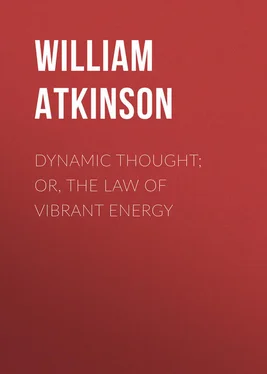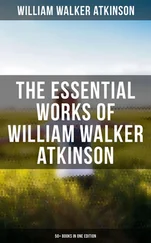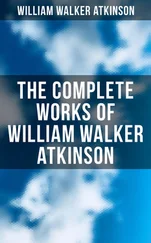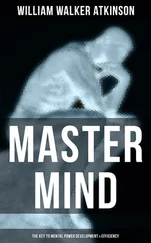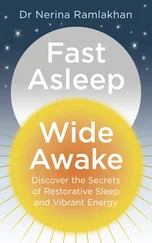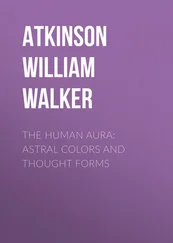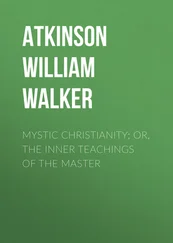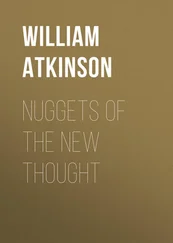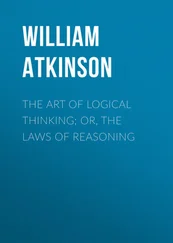William Atkinson - Dynamic Thought; Or, The Law of Vibrant Energy
Здесь есть возможность читать онлайн «William Atkinson - Dynamic Thought; Or, The Law of Vibrant Energy» — ознакомительный отрывок электронной книги совершенно бесплатно, а после прочтения отрывка купить полную версию. В некоторых случаях можно слушать аудио, скачать через торрент в формате fb2 и присутствует краткое содержание. Жанр: foreign_antique, foreign_prose, на английском языке. Описание произведения, (предисловие) а так же отзывы посетителей доступны на портале библиотеки ЛибКат.
- Название:Dynamic Thought; Or, The Law of Vibrant Energy
- Автор:
- Жанр:
- Год:неизвестен
- ISBN:нет данных
- Рейтинг книги:4 / 5. Голосов: 1
-
Избранное:Добавить в избранное
- Отзывы:
-
Ваша оценка:
- 80
- 1
- 2
- 3
- 4
- 5
Dynamic Thought; Or, The Law of Vibrant Energy: краткое содержание, описание и аннотация
Предлагаем к чтению аннотацию, описание, краткое содержание или предисловие (зависит от того, что написал сам автор книги «Dynamic Thought; Or, The Law of Vibrant Energy»). Если вы не нашли необходимую информацию о книге — напишите в комментариях, мы постараемся отыскать её.
Dynamic Thought; Or, The Law of Vibrant Energy — читать онлайн ознакомительный отрывок
Ниже представлен текст книги, разбитый по страницам. Система сохранения места последней прочитанной страницы, позволяет с удобством читать онлайн бесплатно книгу «Dynamic Thought; Or, The Law of Vibrant Energy», без необходимости каждый раз заново искать на чём Вы остановились. Поставьте закладку, и сможете в любой момент перейти на страницу, на которой закончили чтение.
Интервал:
Закладка:
The point is that Crystals act as if they are "alive," and capable of assimilation, growth, and reproduction, in a manner and degree differing but very slightly from corresponding functioning of the lower forms of "life." Verily the Crystals are "alive" – and if alive they must have at least a trace of "Mind." Does it not appear that they exhibit something very like both? Quoting from a recent writer, let us notice that: "Recent investigations in the new department of science, which has been termed 'plasmology,' show in crystals phenomena which are absolutely analogous to vital phenomena – so much so that photographs of certain forms produced in the changes of crystals appear to be almost exact duplicates of those in the various lower forms of microbes. The question has been raised as to whether the microbe is no more alive than the crystal, or the latter equally endowed with life as is the former."
And now another step, in our search for Life. Remember, that the hardest rocks are composed of crystals of certain kinds. And, if the higher crystals have Life, then it is only fair to suppose that the lower and cruder forms are likewise endowed, even if in a still lower degree. And if all crystals are endowed with Life, then the most solid rocks, being composed of aggregations of crystals must be masses of Inorganic Life – and consequently, of Inorganic Mind. A Crystal, according to Webster, is "the regular form, bounded by plane surfaces, which a substance tends to assume in solidifying, through the inherent powers of cohesive attraction."
That definition of Webster tells the whole story, and we see that a "Crystal" is merely a "regular form" of a "Substance," which the substance "tends to assume in solidifying" – that is in re-assuming a solid form after being in a liquid or melted state, and that is just what all the rocks of the earth did when they emerged from the melted state in which they existed in the early days of the world's history. And this "tendency" that caused them to solidify, and assume certain crystal forms, and which must have existed potentially through the melted state – what of that, what is this "tendency" or force. The definition answers: " the inherent powers of cohesive attraction ."
So, here is "Cohesive Attraction," that we shall consider fully in forthcoming chapters of this book. "Inherent," too, the definition says. What is "Inherent?" Let us see, Webster defines "Inherent" as "permanently existing." So this power of Cohesive Attraction "permanently existed" in the Substance or else in connection with it. Let us take another look at Cohesive Attraction.
Cohesive Attraction is that form of Universal Attraction that causes the Molecules of a body to draw together – that "invisible power of" the Molecule, by which it draws another Molecule toward itself, and itself toward the other, the manifestation of which power by several Molecules tends to draw each of them together. (We shall learn of these particles of Substance called Molecules before long.) It is a primal cause of Motion, this mutual Attraction, and drawing-power. Now is it reasonable to suppose that this wonderful "power" is a mere blind-force? Is it not more reasonable to think of it as a form of vital-action – life-action? "Dead" things could not manifest this force and action.
And if this Cohesive Attraction is an evidence of Life, then all substance must have Life manifesting through it. Not only the rocks, but the soil and earth and dirt, for they are but crumbled rock.
And, when we thus consider Substance, as being the "body" through which Life is Manifesting, we must not lose sight of the Molecules and Atoms, in our consideration of the Mass. A bit of rock; crystal; or dirt; is but an aggregation of countless Molecules, grouped together in certain crystallized shapes and forms, each having characteristics of its own. These Molecules cling together, in accordance with their mutual Attractive powers.
And each of these Molecules is composed of a number of Atoms, which cling together in accordance with Chemical Affinity, or Chemism – but which is but another name for Attraction, or Cohesion – and which form a little family, called a Molecule. And these Atoms are composed of Corpuscles. We will waive the consideration of the Corpuscle, for the moment, but even if we consider it, we only carry the subject back a step farther. What we wish to say, could be said even if there were ten further divisions of Substance – or a million, for that matter.
The point we wish you to consider now, is that we must separate the Mass into its constituents – its Molecules, Atoms, and even Corpuscles – in our search for the Life in the Mineral and Chemical World. If there is Life in the Mass, there must be life in the Molecule, Atom, or Corpuscle. Now, do we find it there? Certainly, for the tiniest Atom manifests its Attractive Power, and not only does it draw other atoms to itself by virtue thereof, but it even goes a step further, and shows a "preference" – a degree of "liking" in its mutual relations with other atoms.
We shall see, in future chapters, that there is "desire," "love," "marriage," and "divorce" among the chemical Atoms. We shall consider the flirtations, and love-affairs of certain Atoms. We shall see how an Atom will leave another, and fly to a new charmer. We shall have many evidences of the Atom's power to receive sensations, and to respond to the same . Nothing "dead" about this, is there? The Atom is "very much alive." The Attraction; Affinity; and Motions, of the Atom, give a certain evidence of something "very much like Life," as we see it in higher forms. In the Atom exists all the Life that causes crystallization. And in the Atom lies that which causes Force and Motion to manifest. Verily, the Atom lives and moves and has its being.
And, so our journey is ended – we have traced Life to its last stages of manifestations – and we have found it there, and at each step of the journey. But, stop, we have not completed our journey – we have but begun it. "Why," some of us may cry, "how can we go back of the Atom, or Electron?" The answer is "INTO THE ETHER"!
Yes, back of the Atom and the Corpuscle, is said by Science to lie that wonderful, paradoxical Something they call The Universal Ether – that Something that Science has considered the Womb of Matter and Force – Something that is different from Anything ever known or dreamed of by Man, – that Something which Science has labored so diligently to build up, and which it has used as an "explanation" for so much phenomena, but regarding which, of very recent date, there has begun to grow a distrust and a suspicion, owing to the discovery of Radiant Matter, and things that followed in its train. But, notwithstanding these shadowy suspicions, Science still asserts in belief in the constancy and integrity of The Ether, and it behooves us to investigate that wonderful region in which it dwells, in order to see whether Life and Mind are also to be found there. We think that, in the words of the street, we shall find that they are "very much there."
And, so in later chapters of this book, we shall consider the Etherial Region very fully. But before doing so, we had better give Substance and Motion, in all their forms, a careful consideration, for a correct understanding of them is vitally necessary for an intelligent conception of the ideas underlying the philosophy to be herein set forth.
Now, pray do not leave this chapter with the belief that the writer has said that the Particles of Inorganic Substance are endowed with Conscious reasoning powers. Nothing of the kind has been said – nothing of the kind is meant. The Life and Mind evidenced in the Particles are but the faintest glimmerings. There is no sign of "consciousness" or "reasoning" – the Mind exhibited is less than that of the plant, yes, less than even that of the cell of the plant. The Life is evidenced by power to move, and the Mind is evidenced by the ability to receive impressions and to respond to the same by evidencing Force and movement.
Читать дальшеИнтервал:
Закладка:
Похожие книги на «Dynamic Thought; Or, The Law of Vibrant Energy»
Представляем Вашему вниманию похожие книги на «Dynamic Thought; Or, The Law of Vibrant Energy» списком для выбора. Мы отобрали схожую по названию и смыслу литературу в надежде предоставить читателям больше вариантов отыскать новые, интересные, ещё непрочитанные произведения.
Обсуждение, отзывы о книге «Dynamic Thought; Or, The Law of Vibrant Energy» и просто собственные мнения читателей. Оставьте ваши комментарии, напишите, что Вы думаете о произведении, его смысле или главных героях. Укажите что конкретно понравилось, а что нет, и почему Вы так считаете.
